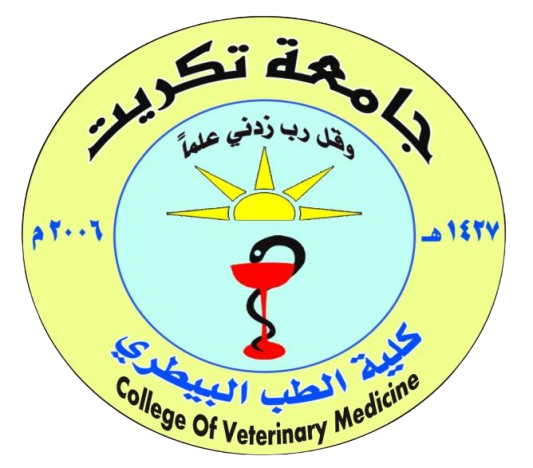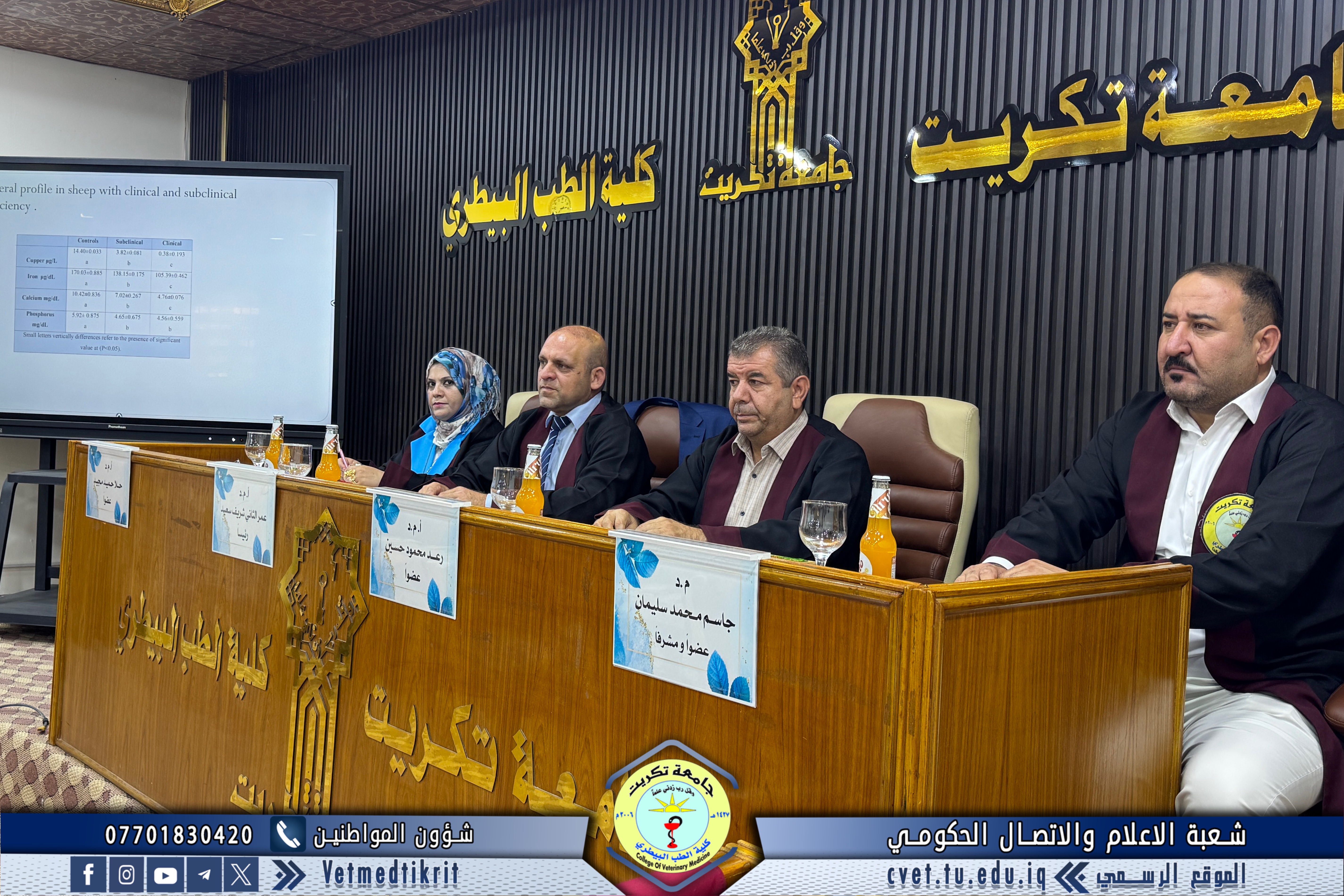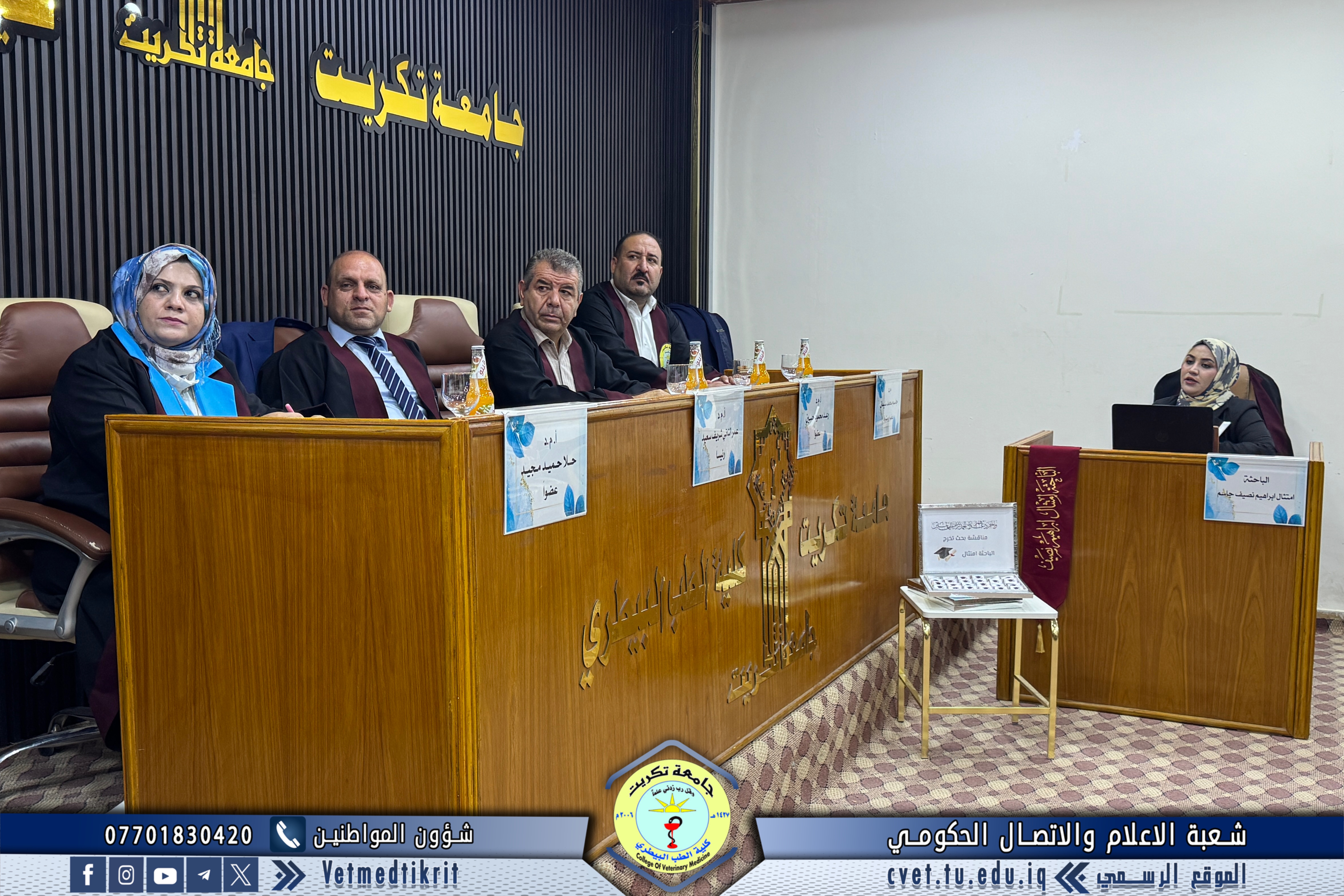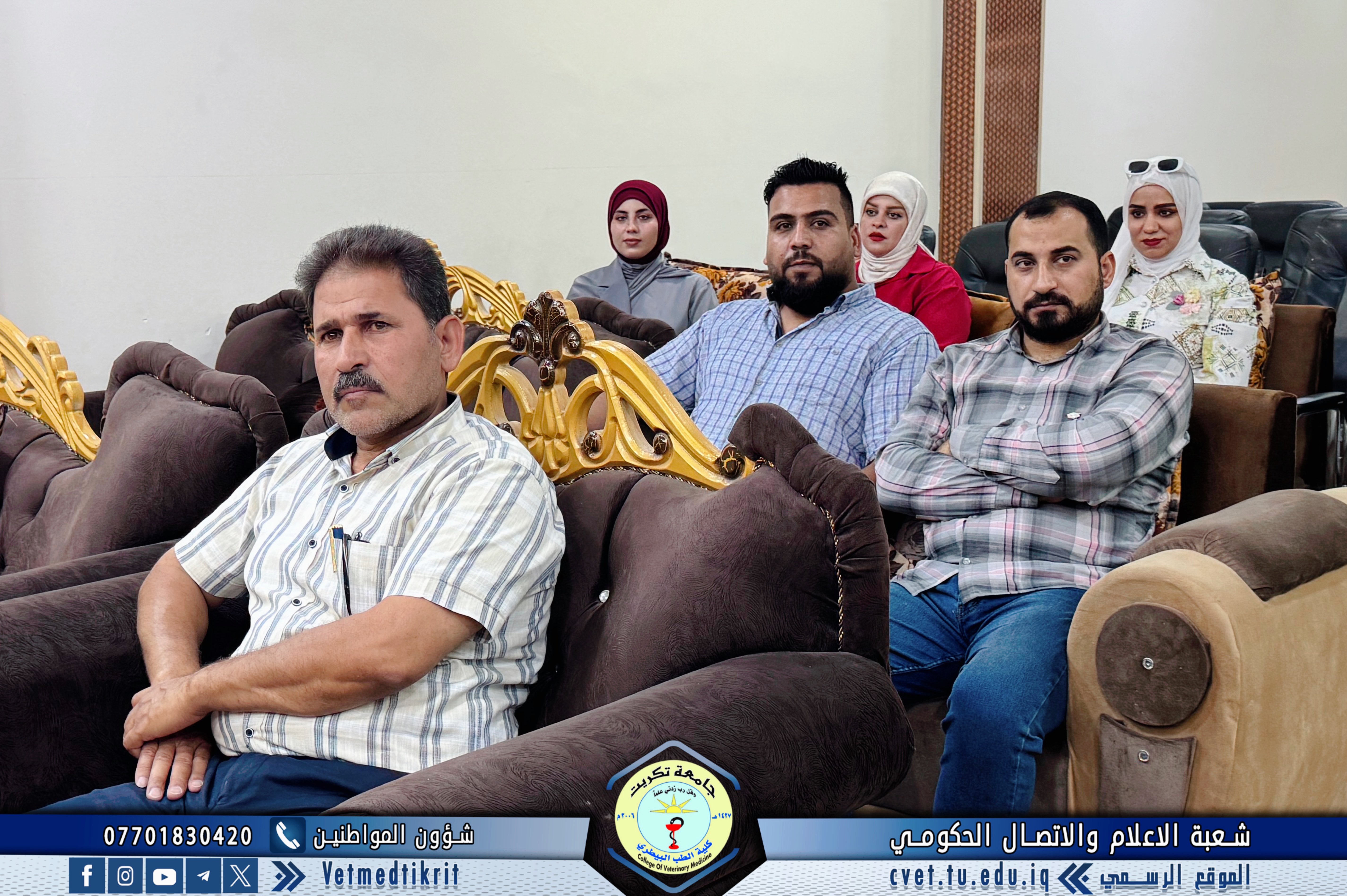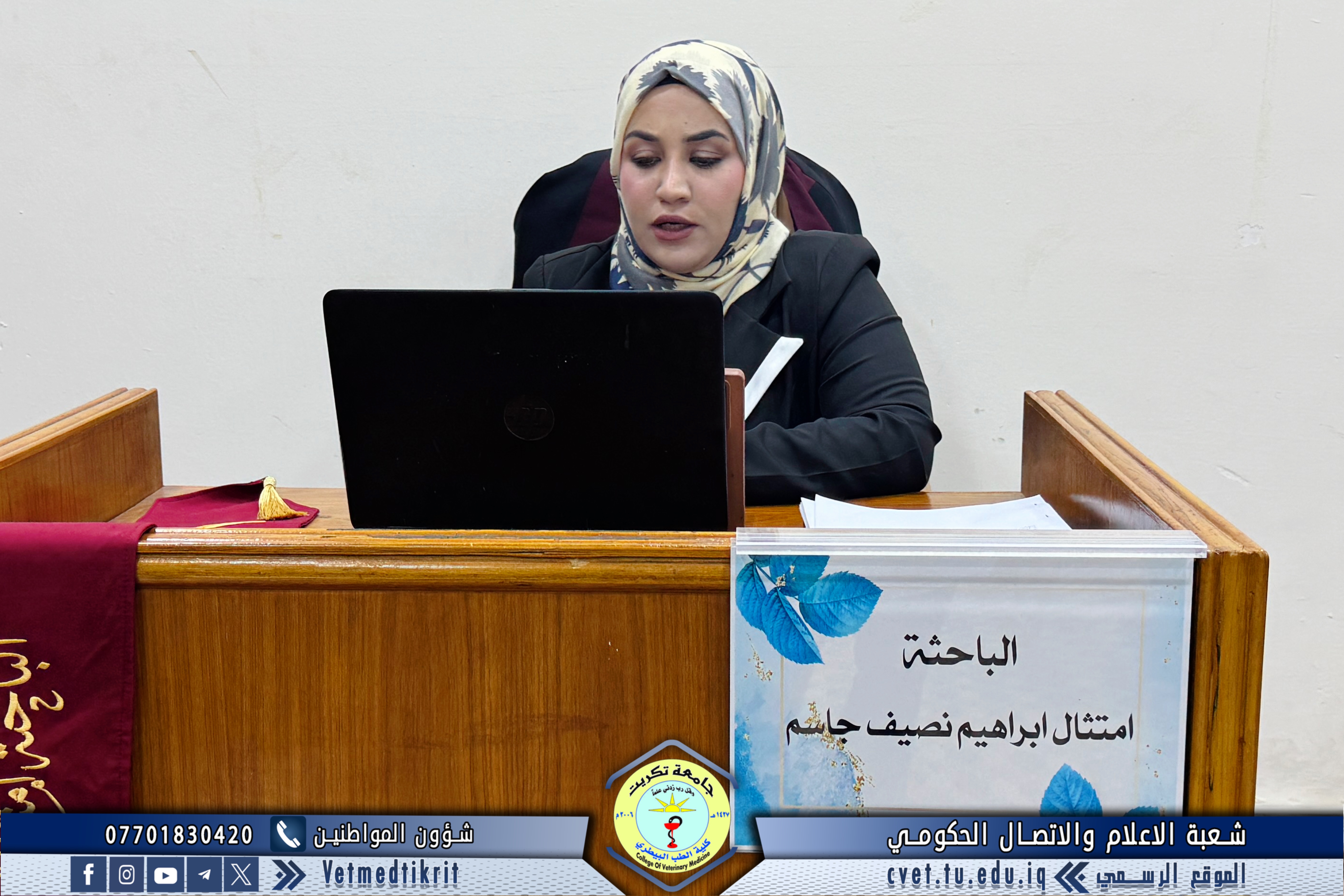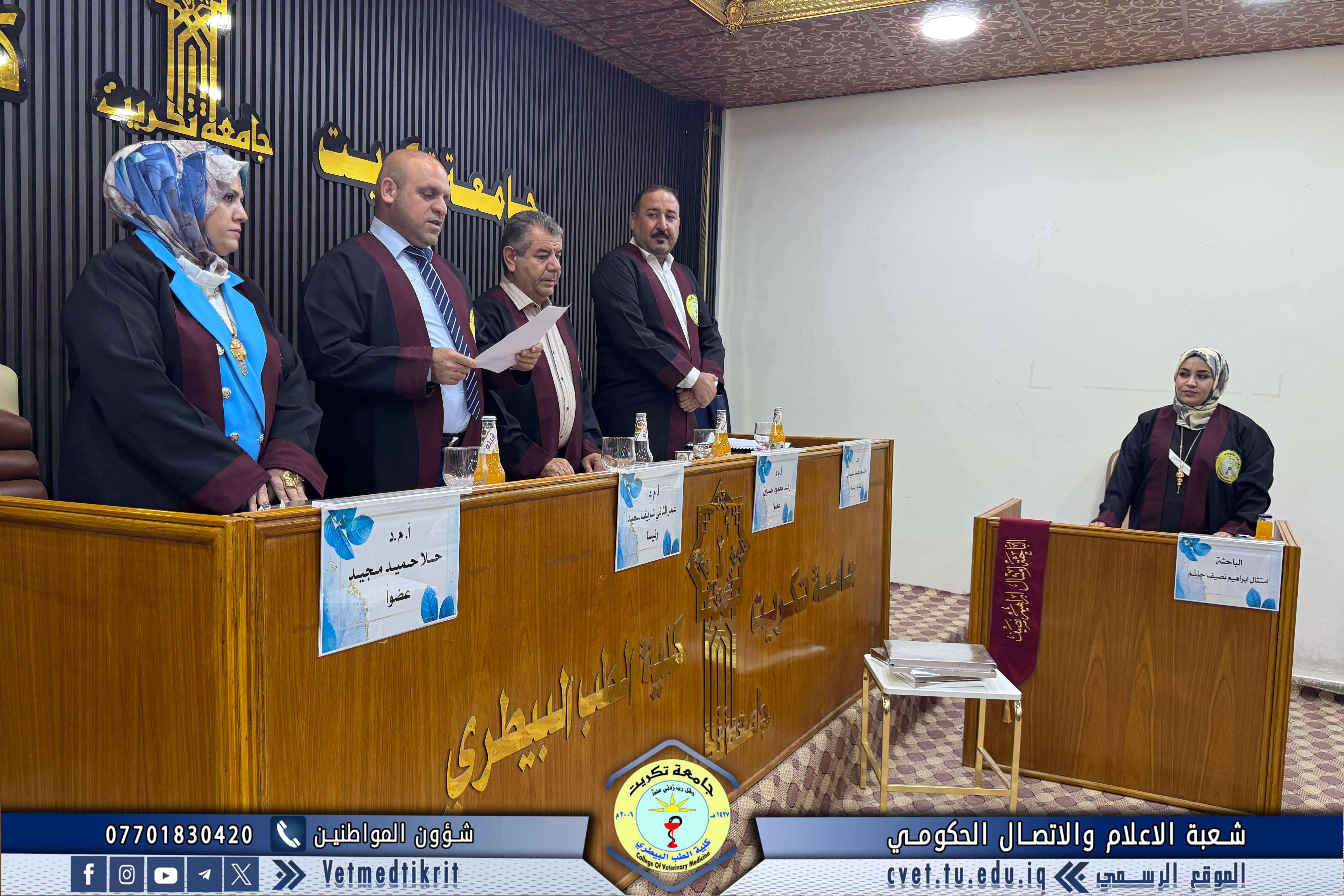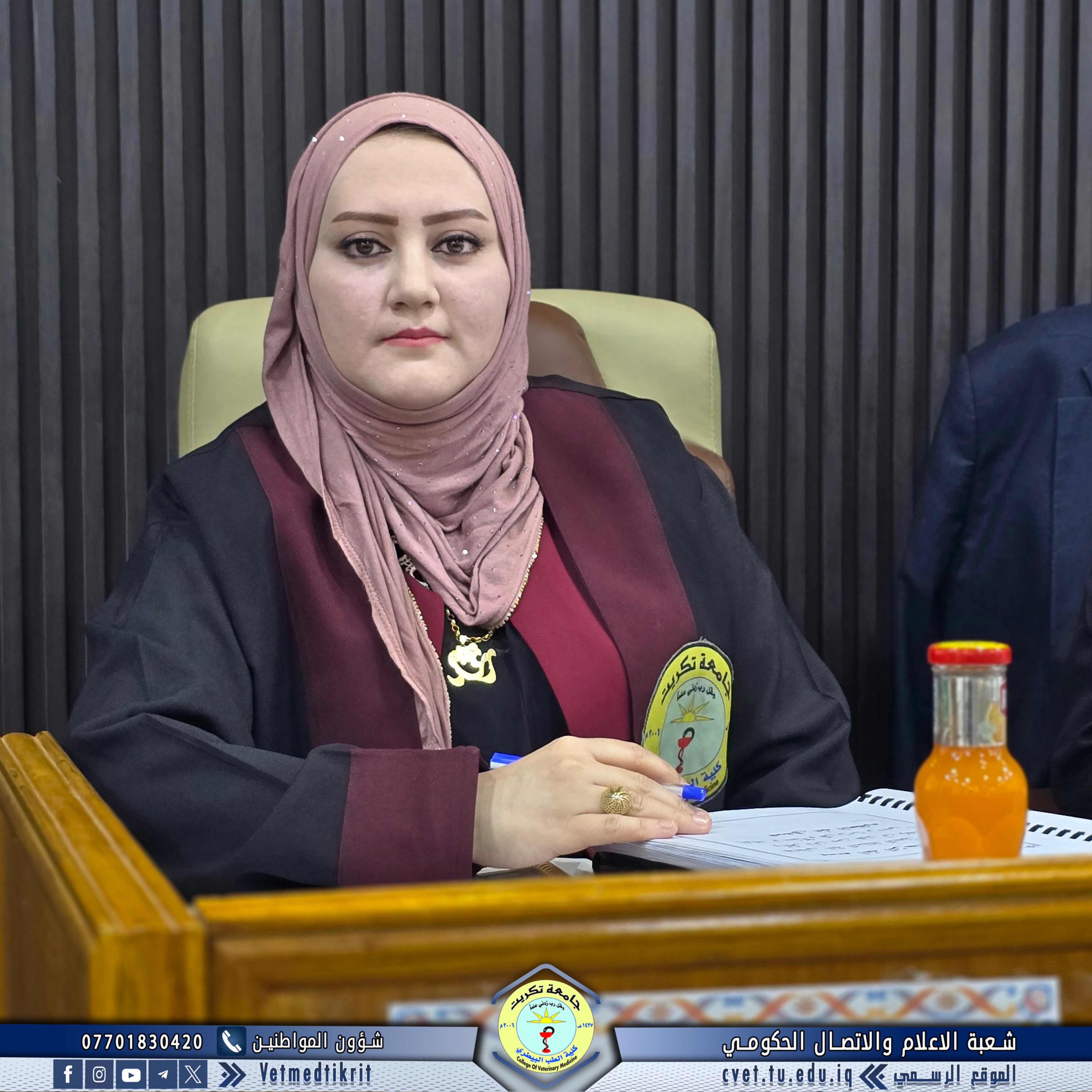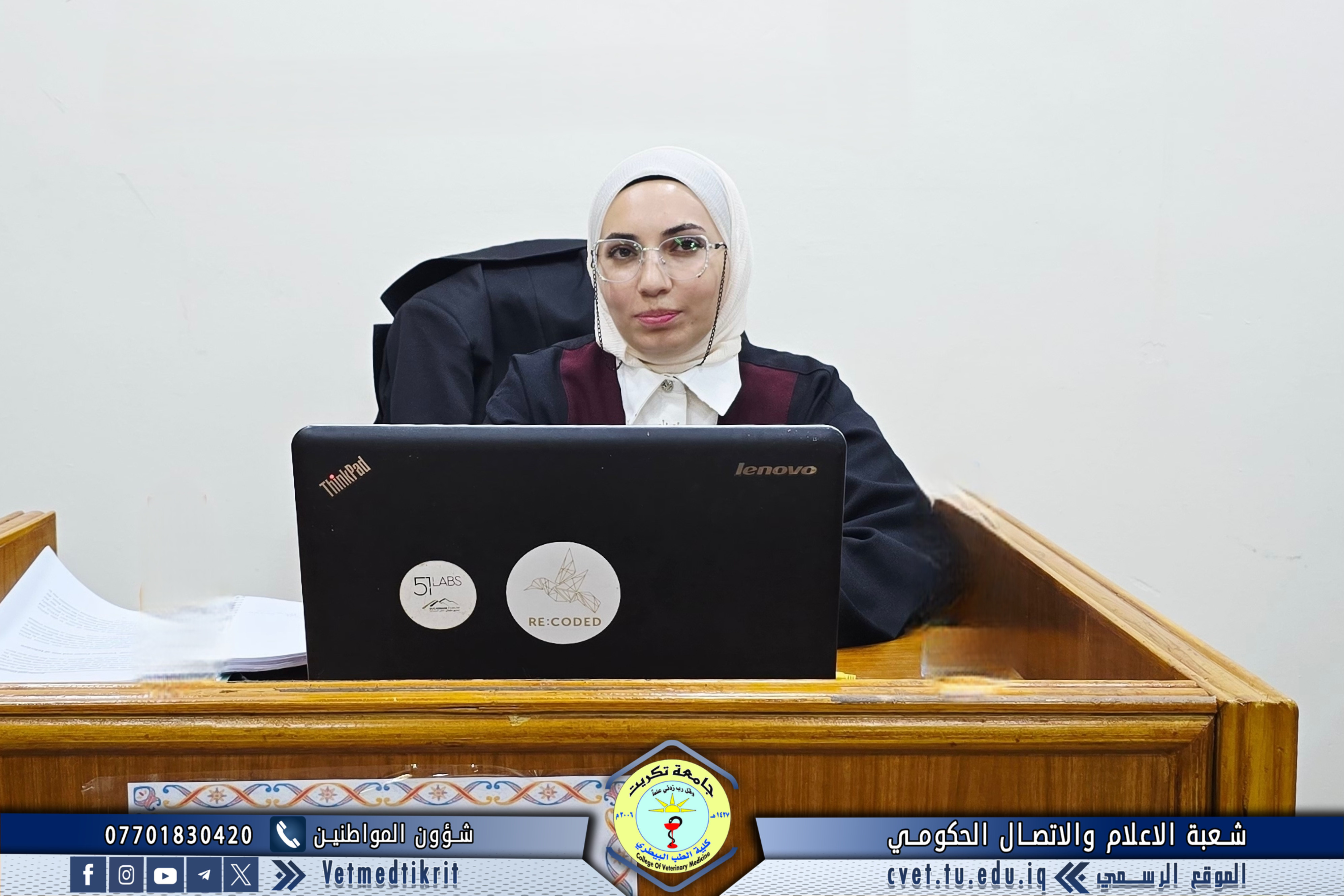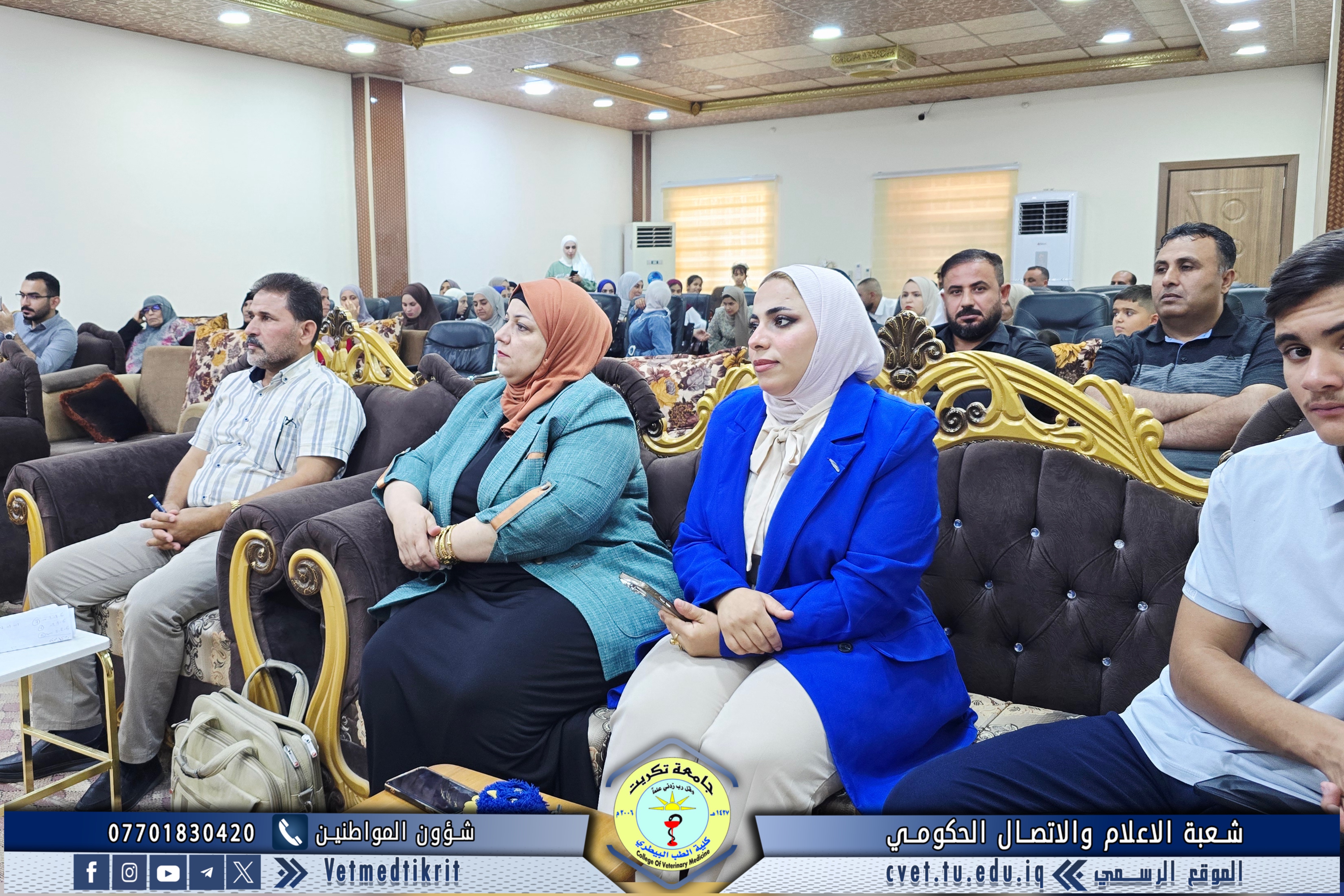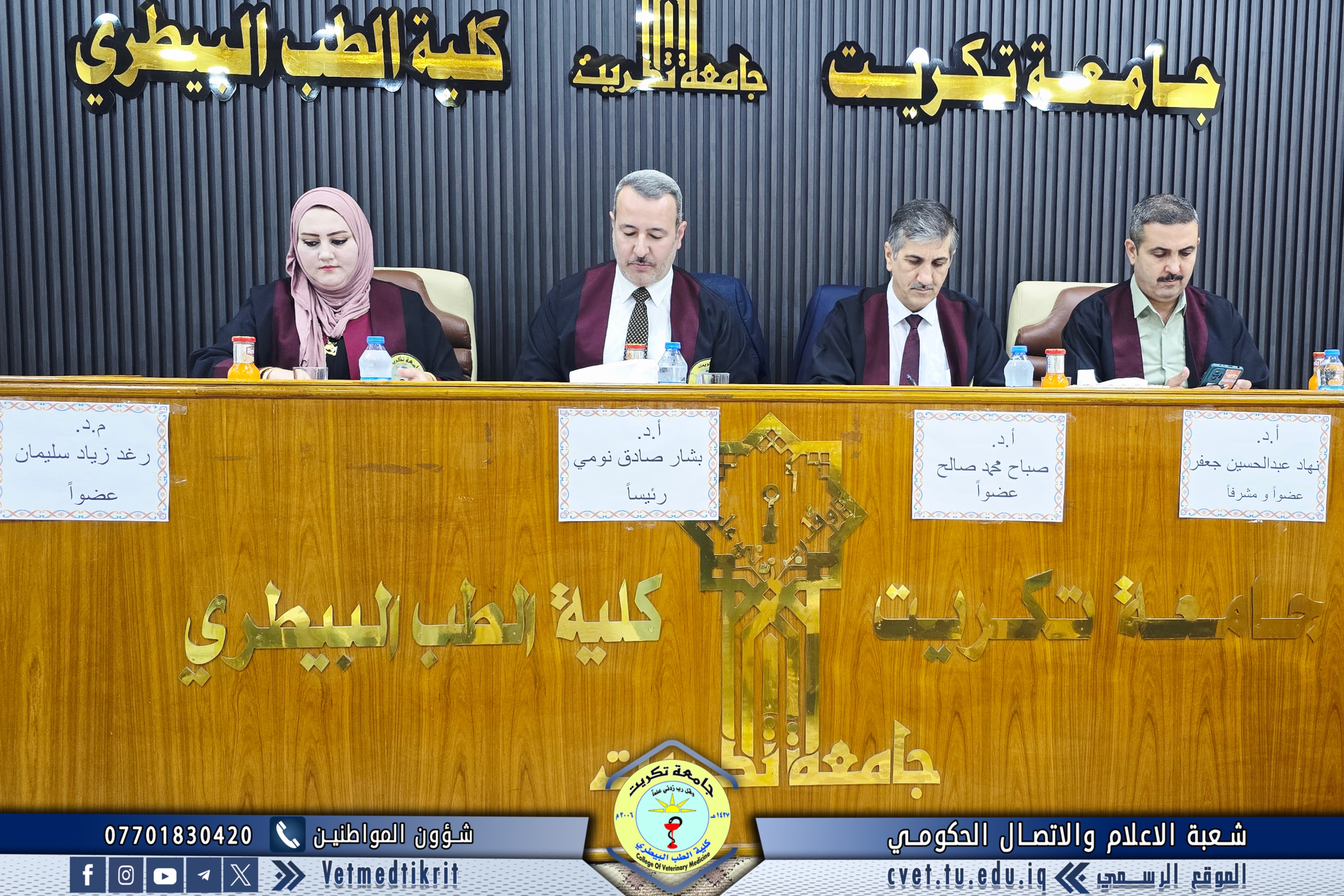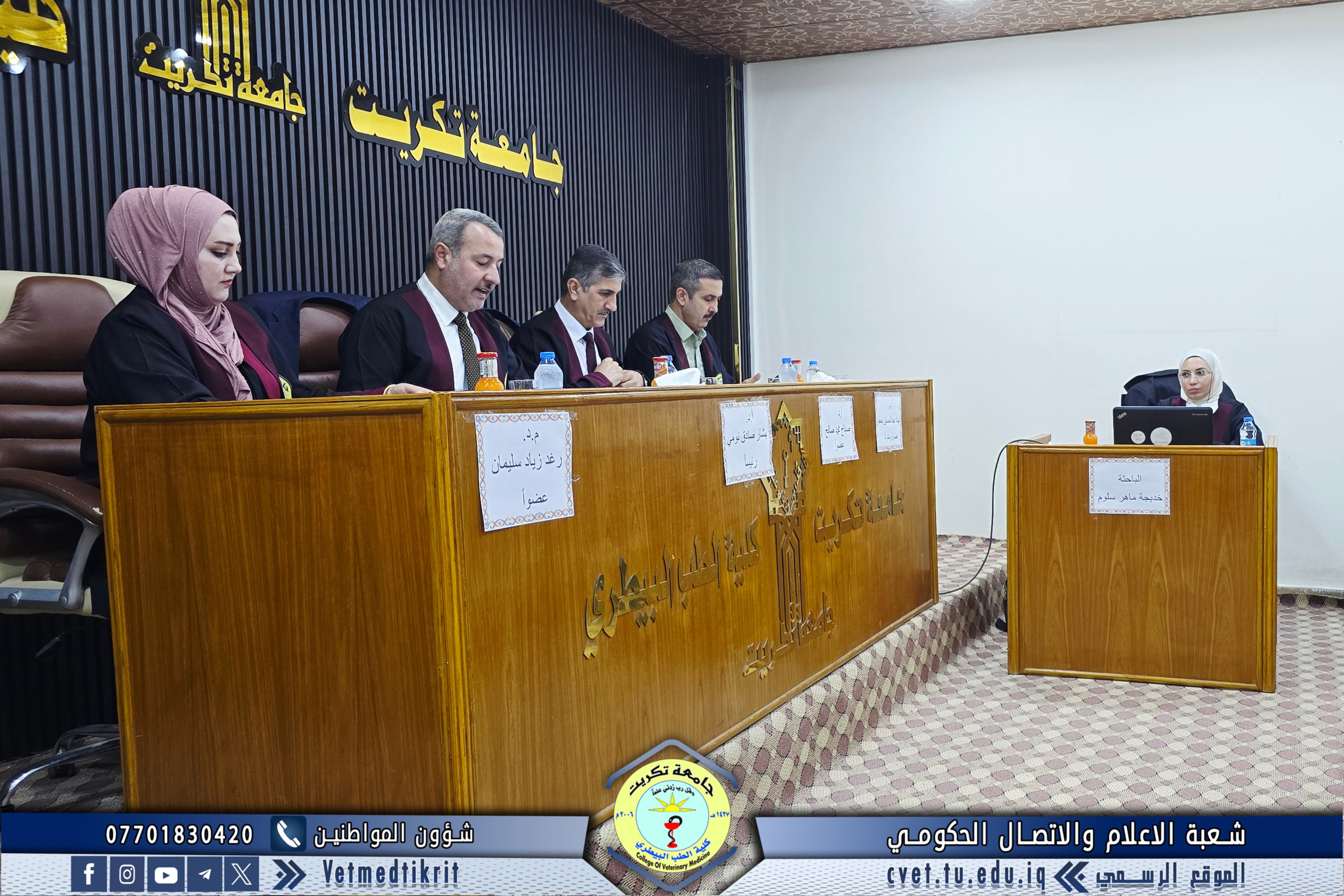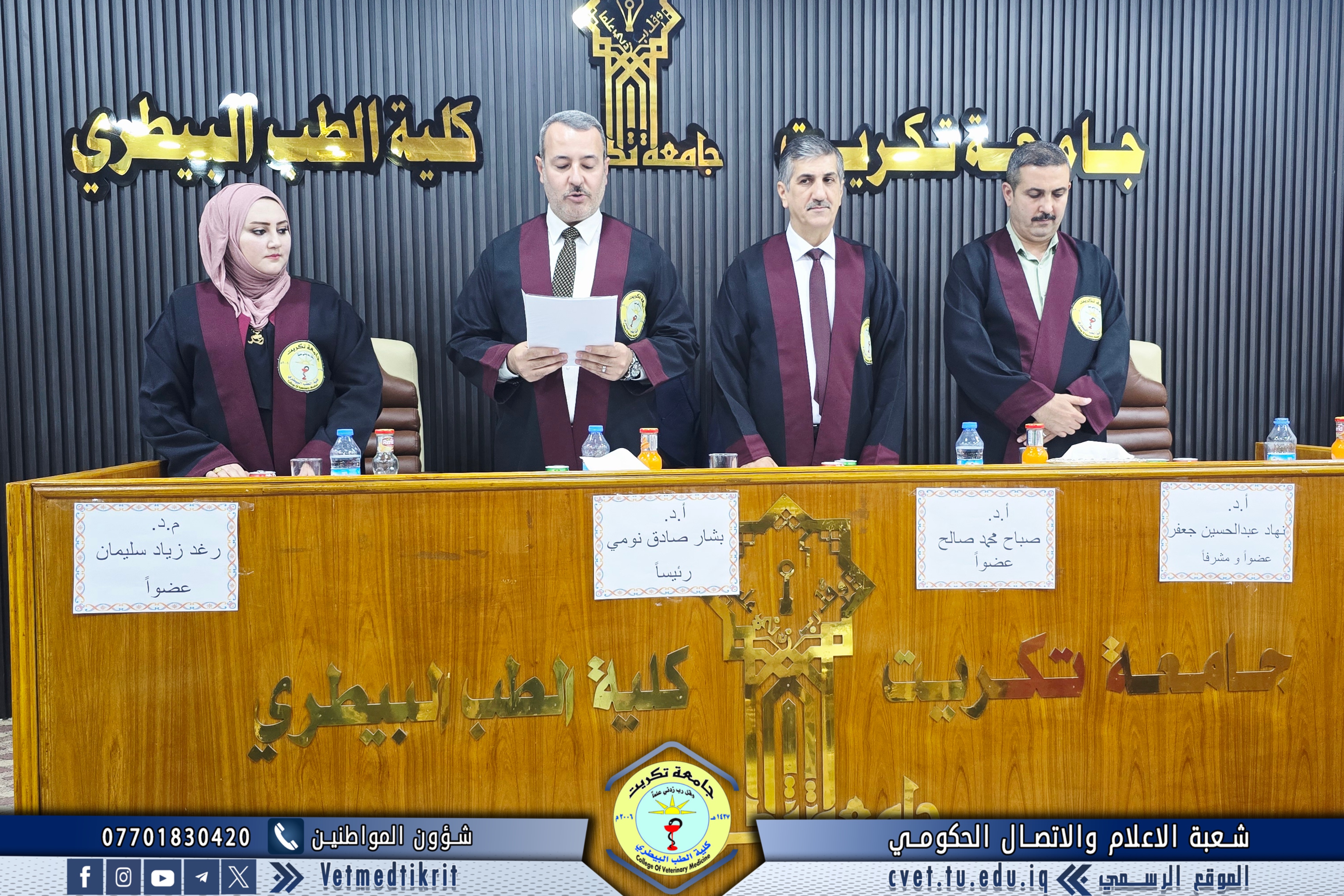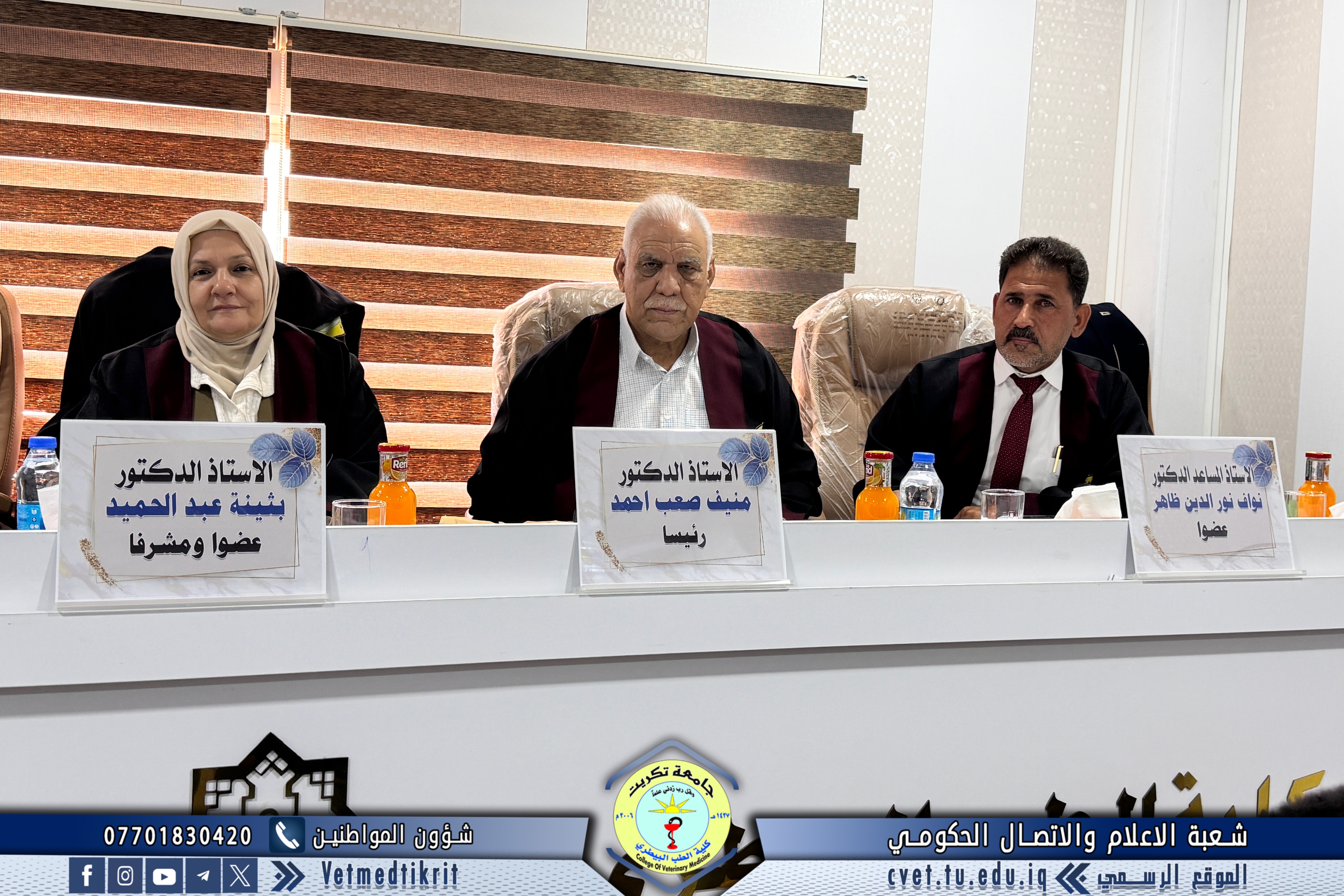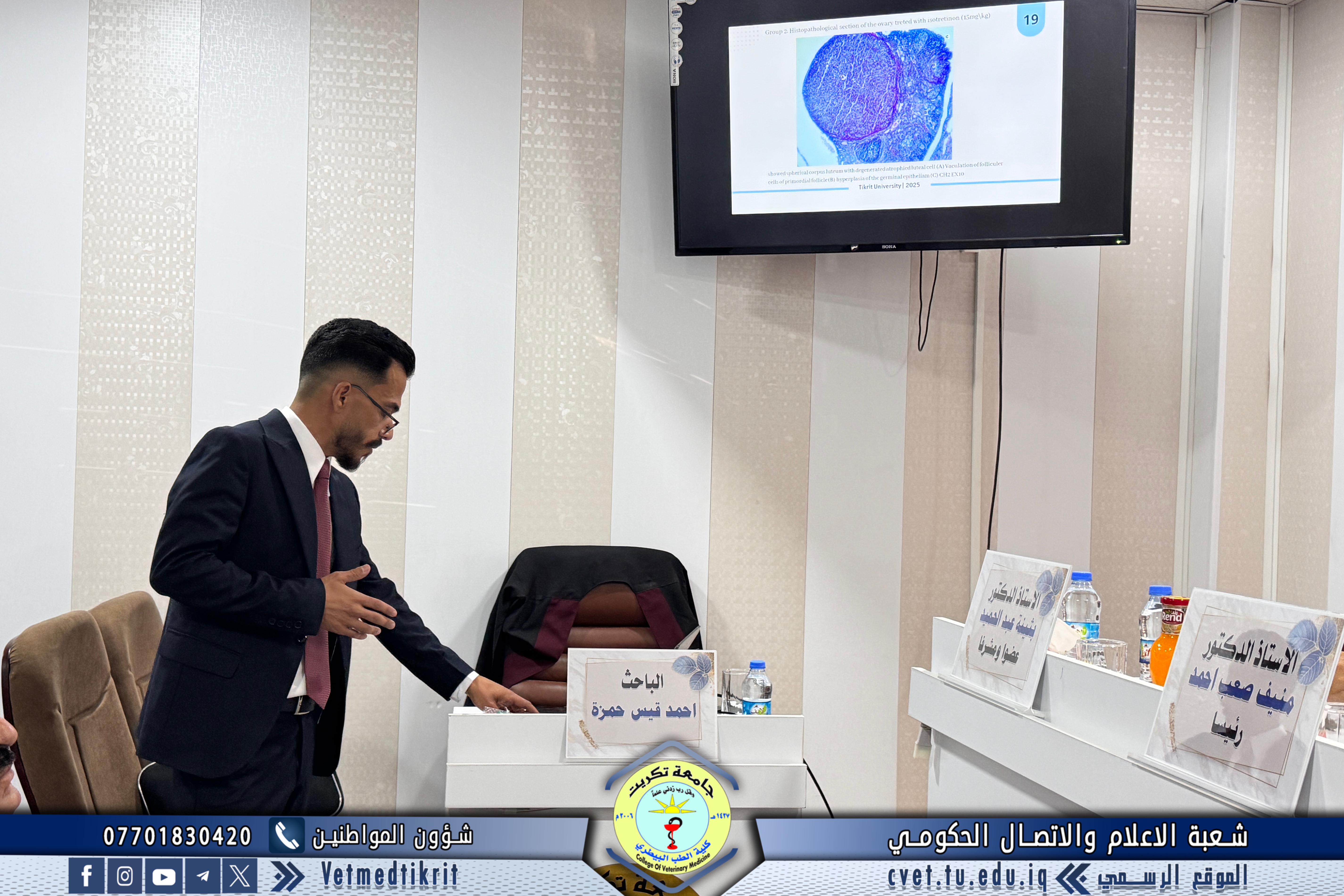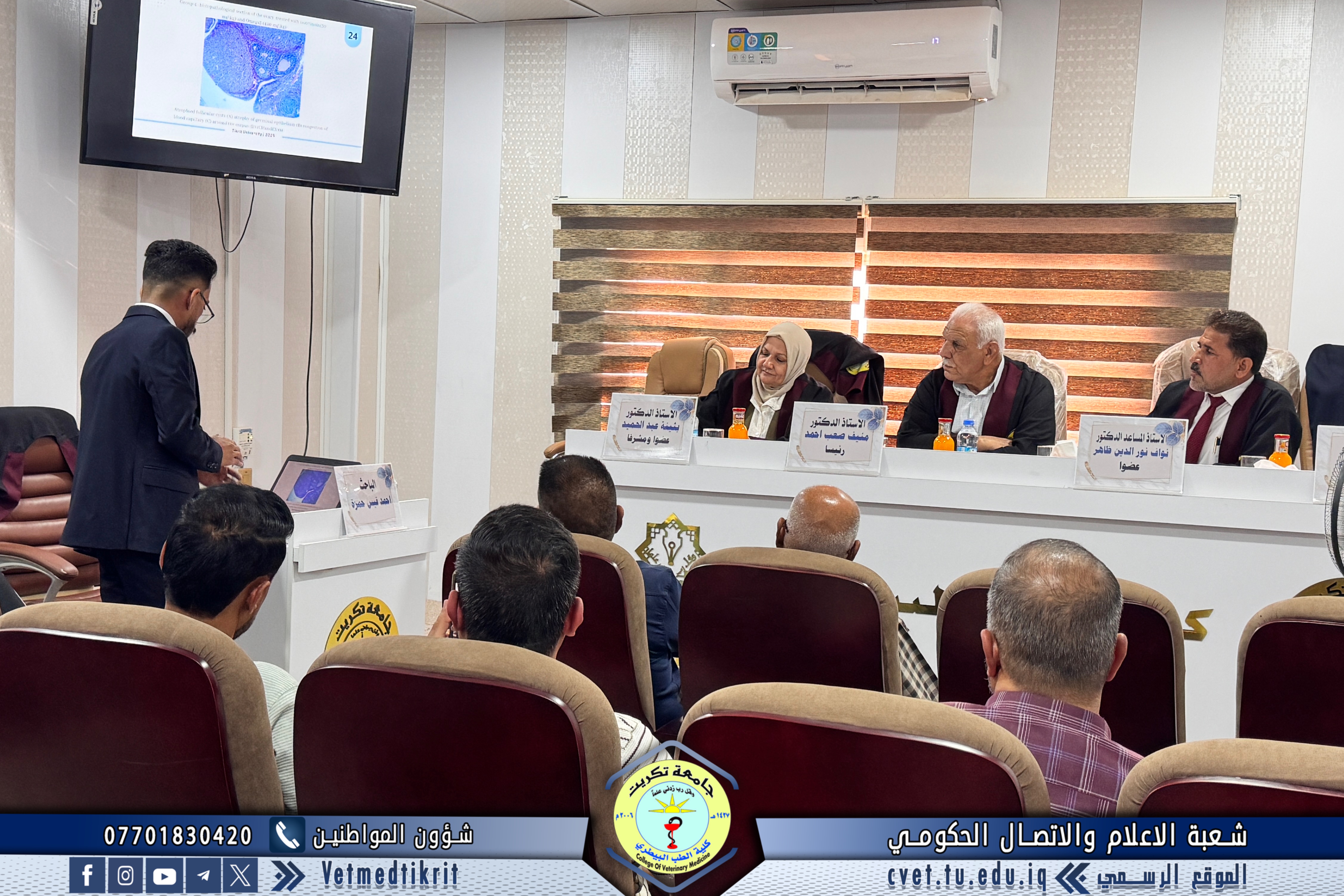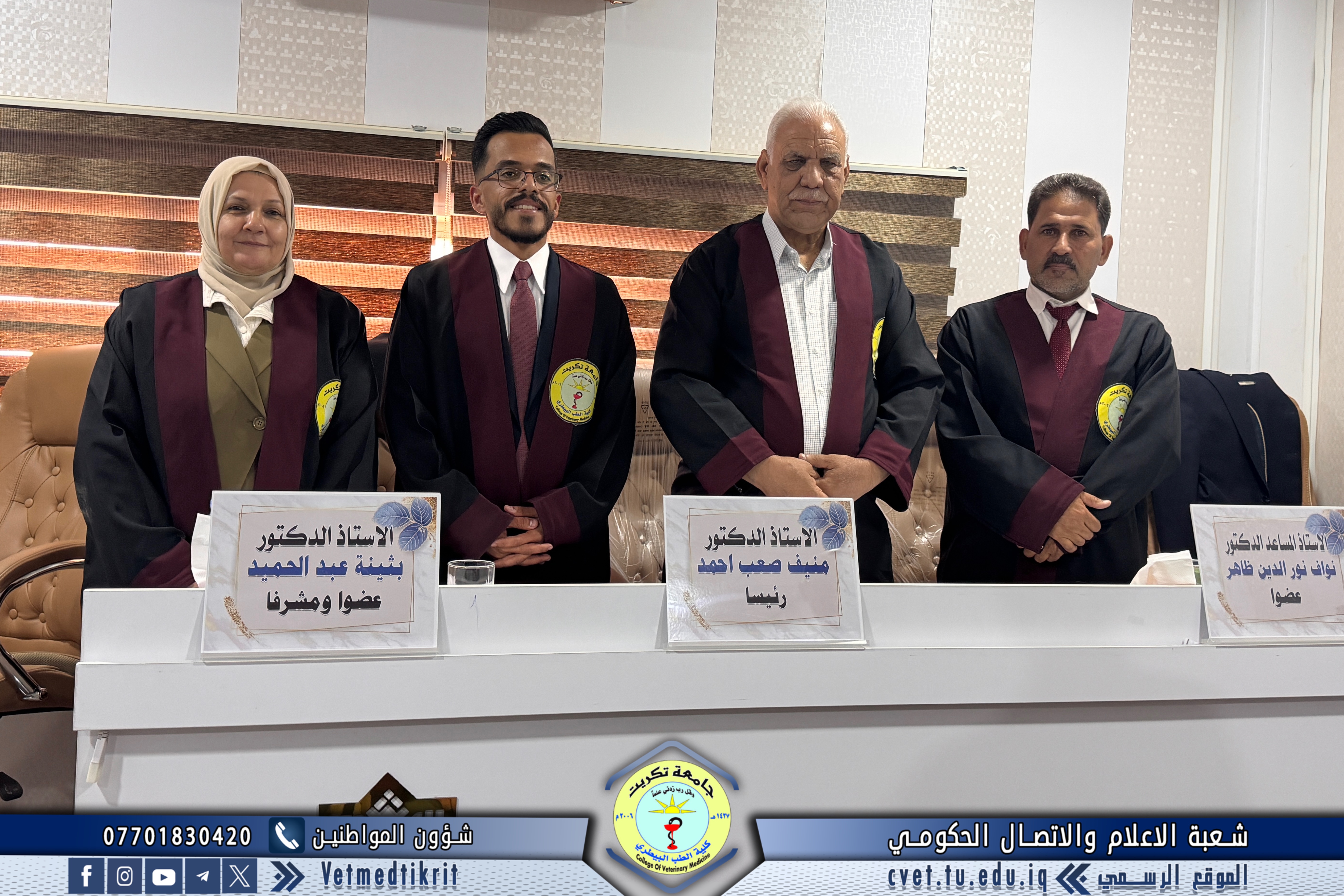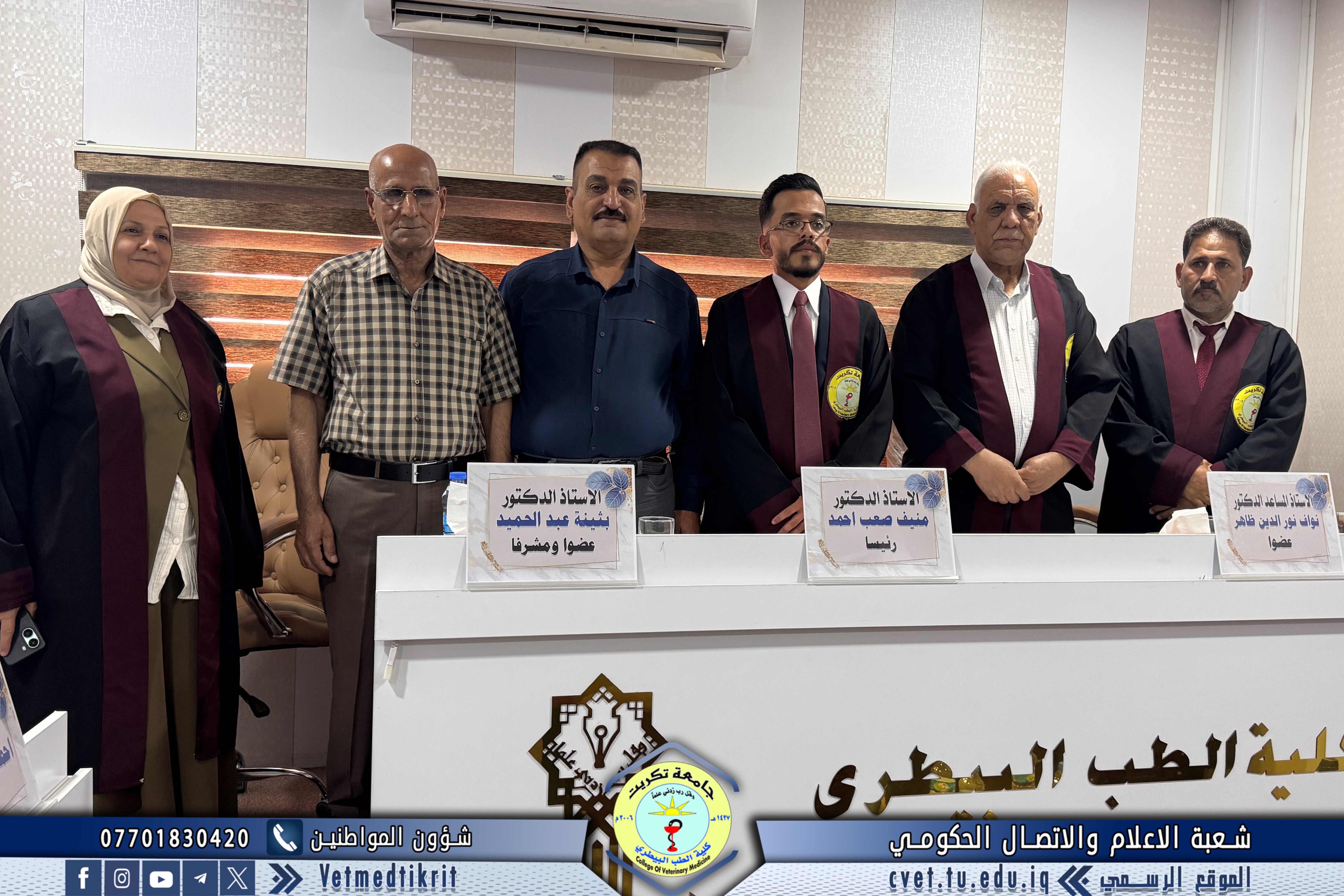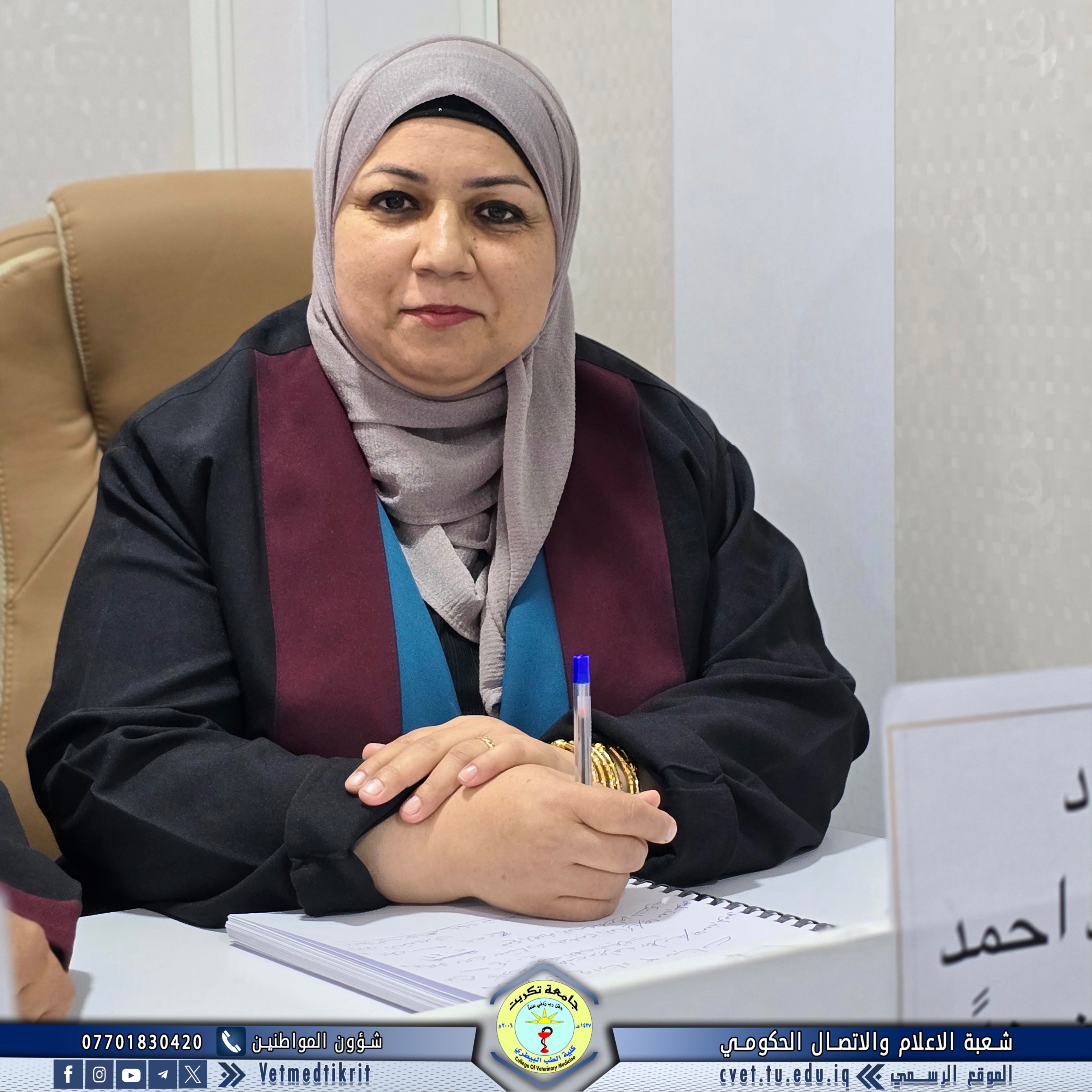With the grace of Allah, the College of Veterinary Medicine at the University of Tikrit held the defense of a Master’s thesis entitled: “A Diagnostic Study of Copper Deficiency in Sheep” by the student Imtithal Ibrahim Nassif, specializing in Pathological Diagnostics.
The examining committee consisted of:
-
Asst. Prof. Dr. Omar Al-Thani Sharif Saeed / Internal and Preventive Medicine / College of Veterinary Medicine – University of Tikrit / Chair
-
Asst. Prof. Dr. Raad Mahmoud Hussein / Internal and Preventive Medicine / College of Veterinary Medicine – University of Diyala / Member
-
Asst. Prof. Dr. Hala Hameed Majeed / Animal Physiology / College of Education for Women – University of Tikrit / Member
-
Lect. Dr. Jasim Mohammed Suleiman / Internal and Preventive Medicine / College of Veterinary Medicine – University of Tikrit / Member and Supervisor
Thesis Abstract:
The study aimed to investigate the clinical, hematological, and biochemical aspects of copper levels in healthy and affected local sheep and lambs suffering from posterior muscular ataxia, in relation to soil and water copper concentrations in different areas of Salah al-Din Province.
A total of 100 blood samples were collected from sheep aged between one month and three years, distributed as follows: Tikrit Island (25 samples), Baiji (10), different areas of Tikrit (30), Al-Alam (25), and Samarra (10). The animals were divided into three groups: healthy, subclinical copper-deficient, and clinically copper-deficient.
Clinical examinations revealed bone fragility, anemia, and immune suppression. Significant hematological changes (P<0.05) included increased white blood cell counts, decreased red blood cells, and reduced hemoglobin levels, particularly in animals from areas with copper-deficient soils. The study involved 10 healthy animals, 50 with subclinical copper deficiency, and 40 with clinical symptoms such as muscular incoordination.
Biochemical analyses showed marked decreases in phosphorus, calcium, and iron concentrations following the onset of clinical symptoms. The minimum normal serum copper concentration was determined at 16.40 ± 4.03 mg/dl. Significant reductions were observed in RBC, HGB, HCT, and PCV values, while increases were recorded in WBC and MCV, along with a reduction in MCHC among affected animals.
Mineral analysis indicated that elevated levels of iron, calcium, and phosphorus may interfere with copper absorption, thereby increasing the likelihood of deficiency. The study also demonstrated a significant decline in antioxidant enzyme activity in clinically affected animals.
To examine the relationship between soil and water copper levels and animal serum copper, 40 soil samples were collected: 25 from areas with reported ataxia cases and 15 from unaffected areas. Results showed significant differences in available soil and water copper levels, with the highest concentrations in Al-Mahzam and Al-Hamra near the Tigris River, and the lowest in Tikrit Island.
The study concluded that grazing sheep in copper-deficient soils results in reduced serum copper levels, negatively impacting health and leading to muscular ataxia. Based on these findings, the research recommends regular monitoring of mineral levels in feed, soil, and water, and providing appropriate copper supplementation according to animal health status, while considering environmental and nutritional factors affecting copper absorption.
The defense, held in Dr. Muhannad Maher Hall at the College of Veterinary Medicine, was attended by faculty members and a gathering of students.
